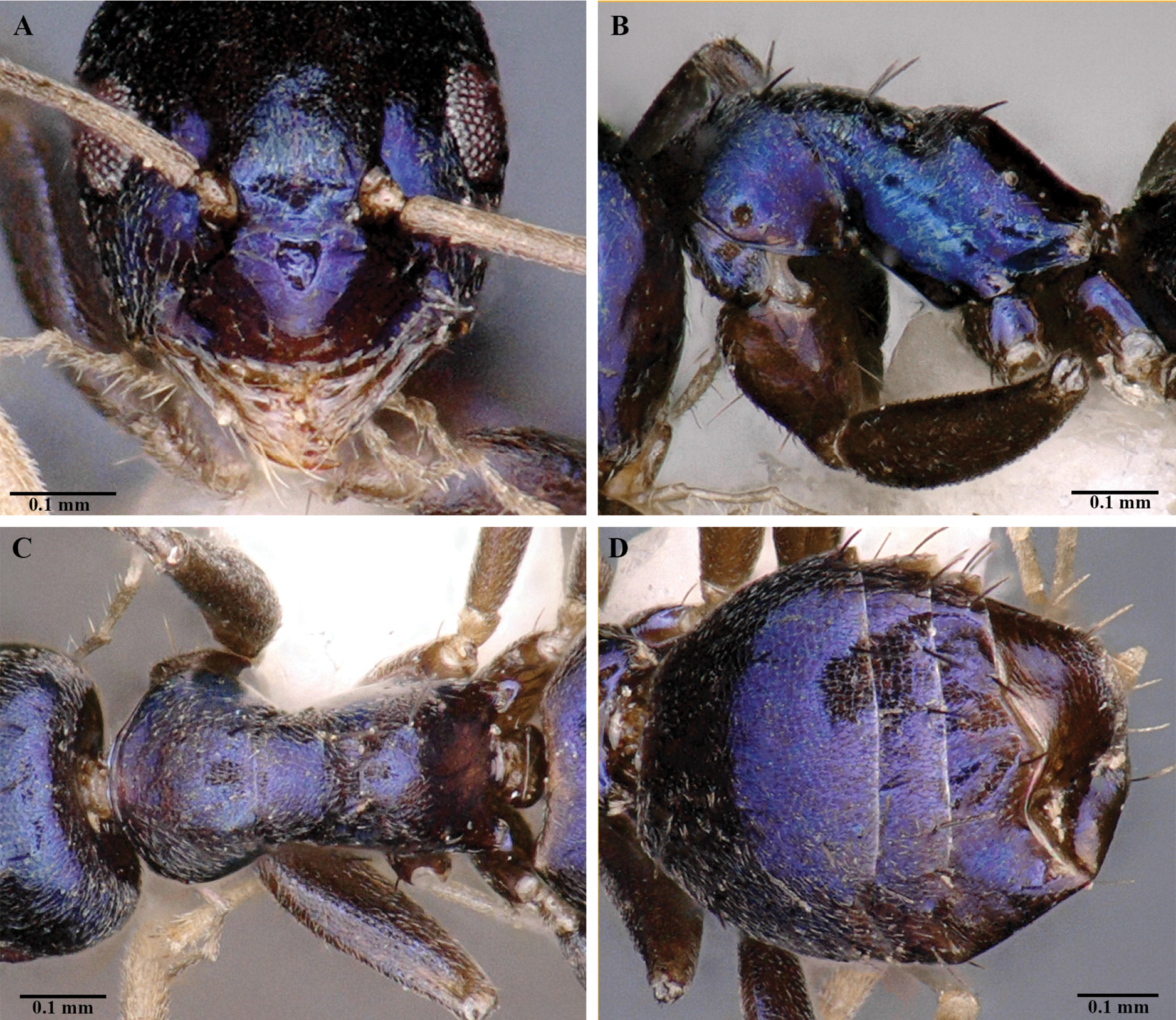During an expedition to survey the biodiversity of northeast India’s Siang Valley, entomologists have stumbled upon a brand-new species of teeny-tiny ant with a rare appearance: it’s a dazzling metallic blue.
Being so shiny appears to have done it a favor when it comes to being found – the team noticed something glistening whilst searching through a forested region.
“While exploring a tree hole about 10 feet [3 meters] up in a steep cattle track in the remote Yinku village one evening, something sparkled in the twilight,” said the researchers in a statement. “With the dim light available, two insects were sucked into an aspirator. To our surprise, we later found they were ants.”
Upon closer inspection of one of the ants’ coloration and head and body shape, it was deemed to be a new species: Paraparatrechina neela, its species name representing the word for blue in many Indian languages. It also marks the first time since 1902 that a new species belonging to this genus has been discovered in India.

P. neela is nearly entirely iridescent blue.
P. neela’s genus, found across tropical regions in Africa, Australia, and Asia, is small in both number and nature. There are only 38 validated species within the group, all of them characteristically tiny. The new species is no different, measuring in at less than 2 millimeters (0.08 inches), though the researchers note that its eyes are large relative to the size of its head.
It’s not just the discovery of such a small ant within a comparatively large forest that makes the new species an impressive find – blue, let alone metallic blue, is also a pretty rare color in the animal world, though it often pops up in insects. In ants, however, it’s particularly rare.
So why is it blue? At the moment, we don’t know, but the researchers are keen to find out. However, despite being a biodiversity hotspot, threats to the area in which P. neela was found might present some hurdles to that process.
“Large-scale infrastructure projects like dams, highways, and military installations, along with climate change, are rapidly altering the valley,” said corresponding author Dharma Rajan. “The impact extends beyond the valley itself, as these mountains play a critical role not only in sustaining their own diverse ecosystems but also in ensuring the well-being of millions of people living downstream.”
But if those threats are avoided, the team hopes to find the reason behind the new species’ unique coloration.
“Does it help in communication, camouflage, or other ecological interactions?” they write in the study describing the new species. “Delving into the evolution of this conspicuous coloration and its connections to elevation and the biology of P. neela presents an exciting avenue for research.”
The study is published in ZooKeys.
Source Link: New Rare Species Of Tiny, Metallic Blue Ant Discovered In Remote India